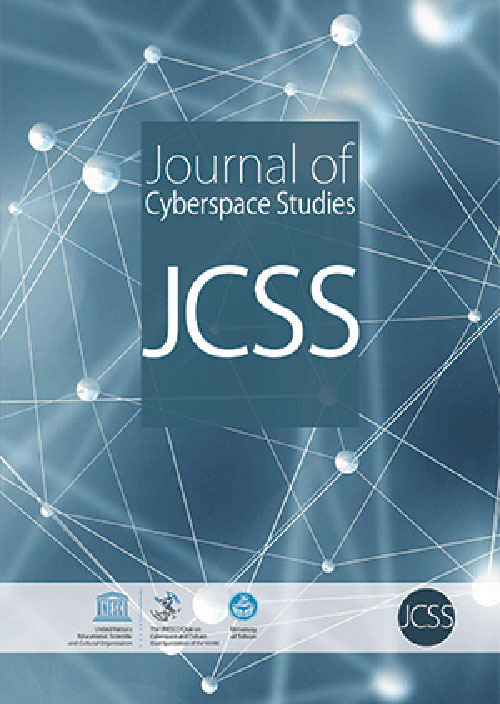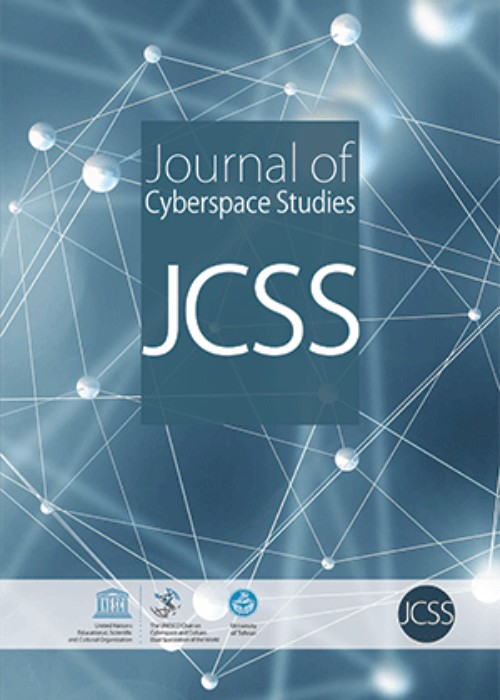فهرست مطالب

Journal of Cyberspace Studies
Volume:4 Issue: 2, Summer-Autumn 2020
- تاریخ انتشار: 1399/04/11
- تعداد عناوین: 3
-
Pages 81-100This paper looks at how Muslim women with an Iranian background and now living in Canada perform their identity through wearing the hijab. This was achieved by observing the behavior of six members of this community on Facebook using Erving Goffman’s stigmatization theory. The observation reveals that women who wear the hijab are more likely to identify themselves as Muslim-Canadian while those who have abandoned the hijab after immigration are more likely to identify themselves as Iranian-Canadian. Moreover, the results show that while Goffman’s theory is very useful in trying to understand the stigmatization of the veil after the 9/11 attacks as well as other extremists’ attacks, the pressures that this created on Muslim women, as well as the behavior of some women in dropping the veil in order to ‘pass’ such stigmatization, his theory is of limited use in understanding the more complicated performance of women who kept their hijab in spite of the challenges they faced.Keywords: Erving Goffman, Facebook, hijab, Identity Performances, Muslim Women
-
Pages 101-128This study seeks to identify and describe believable and probable scenarios about the future engagement of children in cyberspace from the perspective of futures studies. Children's and adolescents’ access to the Internet and network-based technologies is becoming increasingly prevalent. So explaining the key factors and uncertainties affecting this phenomenon requires a comprehensive insight into current and emerging trends and the change drivers. For this purpose, after reviewing several useful technological and social trends, using scenario-based planning methodology, questionnaire tools and expert panel, 28 effective factors, ten key factors, and five driver forces (with uncertainty) were identified. Then, structural analysis and scenario logic explanations have been performed by Micmac, Scenario wizards, and cross-impact matrix analysis. Accordingly, the four scenarios of “salmon in the pool”, “salmon in the river”, “guppy in the tank”, and “goldfish in the pond” have been identified and narrated for the future of Iranian children's engagement in cyberspace. The findings of this study provide a more comprehensive understanding of believable futures while emphasizing the importance of engaging and addressing the interests of audiences and the needs of stakeholders in designing relevant strategies and broadening the horizons of decision-makers toward future alternatives.Keywords: Children, cyberspace, future, scenario planning, teenagers
-
Pages 129-151This research aims to provide a theoretical model to explain addiction to social network using media literacy and emotional intelligence as independent variables and social support as the mediator. The study population includes all students of Bojnord’s university in 2017-2018 academic year. It was determined based on three indices: a medium effect size of 0.30, a test power of 0.85, and an alpha of 0.05. A sample of 160 people was determined by G-Power software, and 178 questionnaires were completed. The sampling was conducted using available sampling method. To do so, the link of research questionnaires was offered to volunteer students. The main research instruments were: social support questionnaire, addiction to social network questionnaire, emotional intelligence questionnaire and multidimensional social support questionnaire. The exploratory nature of research data was analyzed by partial least squares method and PLS software. Results showed the reliability of the measurement model, the structural model and the overall research model (GOF=0.66). According to the results, all direct effects were significant. That is, social support(r=0.84, p <0.0001), media literacy (r=0.698, p <0.0001) and emotional intelligence (r=0.798, p <0.0001) were significantly correlated with addiction to virtual social network. Also, Sobel statistics and its significance level suggested the indirect effect of media literacy (p <0.024) and emotional intelligence (p <0.011) on addiction to social network through social support. Emotional impulse control, awareness of media content and processes, and a sense of belonging and relationship with other people in the real world predict addiction to virtual social networks. Hence, the social support of government and authentic sources can mediate the association between addiction to social network and emotional intelligence in university students and improve their media literacy.Keywords: addiction to virtual social network, Emotional intelligence, media literacy, Social support


